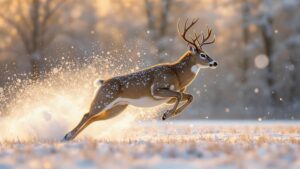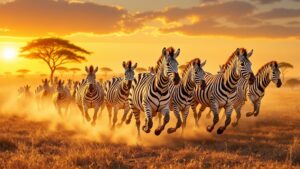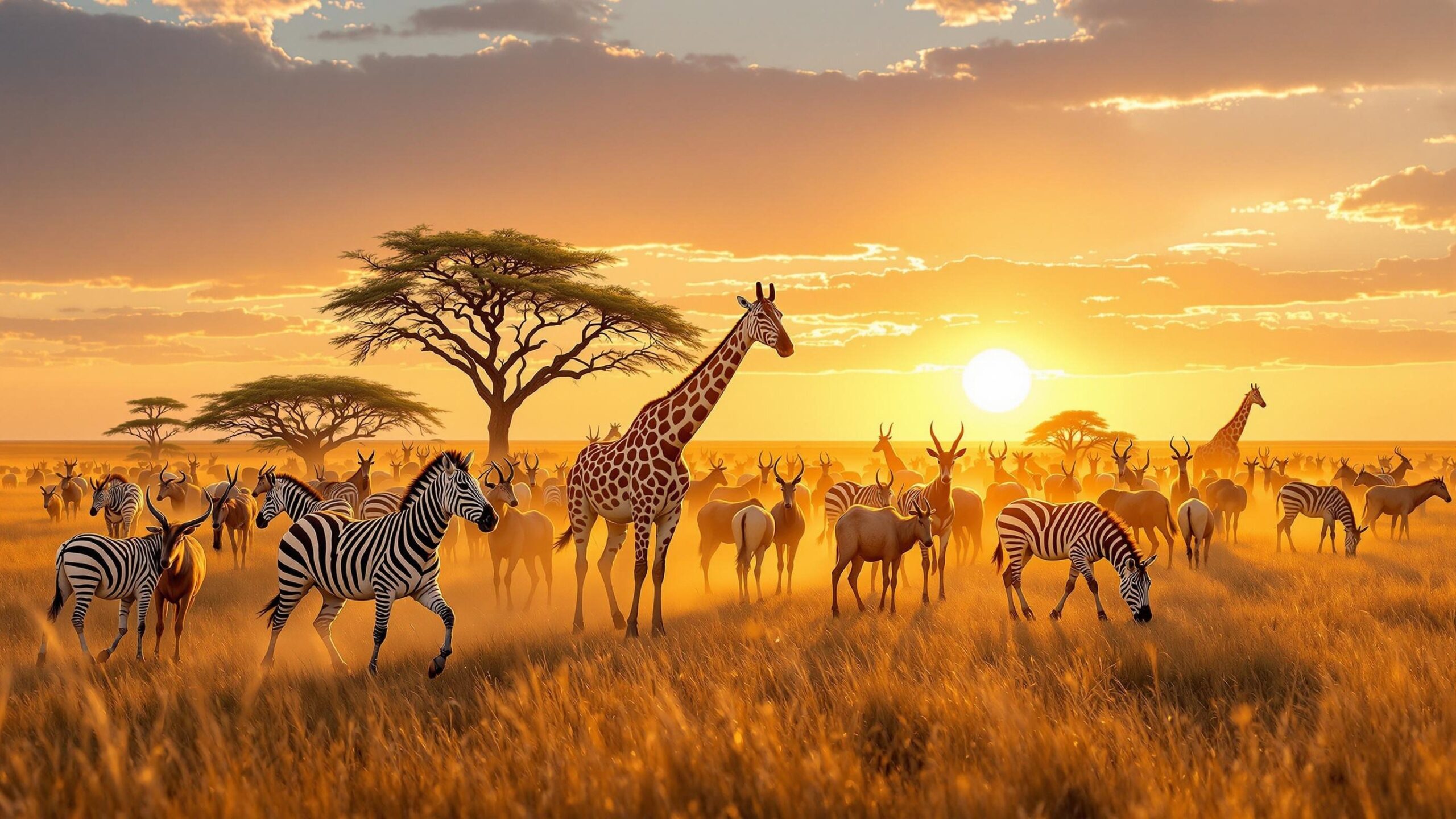Hoofed Mammals: The Earthbound Giants and Fleet-Footed Nomads
Across the world’s grasslands, forests, mountains, and deserts, a powerful and diverse group of mammals roams, grazes, gallops, and occasionally leaps with spectacular force. These are the hoofed mammals—creatures that range from the towering giraffes of the African savannah to the elusive mountain goats of alpine cliffs. Known to scientists as ungulates, hoofed mammals make up one of the most ecologically influential and visually iconic categories in the animal kingdom. From antelopes and deer to horses, rhinos, and pigs, they form a vital thread in the fabric of life on Earth.
Hoofed mammals are united by a common feature: their weight-bearing toes are encased in hardened keratin structures known as hooves. These evolutionary adaptations offer speed, durability, and support for locomotion over various terrains. Whether browsing in dense forests, sprinting across savannahs, or climbing near-vertical rock faces, ungulates are perfectly tailored to survive—and thrive—in demanding environments. This article explores the fascinating world of hoofed mammals, beginning with their defining characteristics and then diving into the major sub-groups. Each subgroup reveals a unique branch of evolutionary strategy, ecological role, and often remarkable behavior. Together, they demonstrate the stunning versatility of hoofed life.

Deer
Deer: Graceful Stewards of Forest and Field There’s a certain magic that happens when you see a deer in the wild. The hush of the forest, the flick of a white tail, the quiet crunch of hooves on fallen leaves—it all combines into a moment of quiet wonder. Whether bounding across an open field at dusk or standing statue-still in dense woodland, deer seem to embody the delicate balance between

Giraffes
Giraffes: Towering Icons of the African Wilderness There’s something immediately magical about seeing a giraffe for the first time. Whether it’s in the wild under the golden African sun or behind the glass of a zoo enclosure, giraffes have a way of capturing our imagination. Their impossibly long necks stretch high into the canopy, their graceful stride rolls like a wave across the savannah, and their spotted coats shimmer with

Hippopotamus
Hippopotamus: River Giants of the Animal Kingdom There’s something awe-inspiring about the presence of a hippopotamus. One moment, the water seems still and serene, a glassy surface broken only by the occasional ripple. Then—suddenly—a massive snort erupts from the water’s surface, followed by the unmistakable barrel-shaped head of a hippo emerging like a prehistoric submarine. These enormous creatures are among Africa’s most iconic animals, full of contradictions: cute but dangerous,

Zebras
Zebras: Stripes of the Savanna, Icons of the Wild There’s something mesmerizing about the sight of a zebra. Whether glimpsed under a blazing African sun or moving as part of a vast herd across golden plains, their distinctive black-and-white stripes catch the eye and stir the imagination. No two stripe patterns are exactly alike, giving every zebra its own visual fingerprint, as unique as a snowflake or a human face.
Biological Framework: What Makes a Mammal Hoofed
Hoofed mammals belong primarily to two orders: Artiodactyla, the even-toed ungulates, and Perissodactyla, the odd-toed ungulates. In Artiodactyls, weight is distributed equally between the third and fourth toes, while in Perissodactyls, the third toe is the primary support. This distinction influences how they walk, run, and maneuver through their habitats. Ungulates are herbivores with digestive systems specialized for processing large quantities of plant material. Many have complex stomachs—such as the four-chambered ruminant system seen in cows and deer—that allow them to break down cellulose through microbial fermentation. Others, like horses, rely on hindgut fermentation in the cecum and colon. These mammals are often social, forming herds, bands, or harems. Their reproductive strategies range from seasonal rutting competitions to prolonged maternal care of single offspring. Many are migratory, following food sources across vast distances, while others maintain tight territorial control over smaller ranges.
Ruminants: Masters of Digestion and Mobility
Among the most recognizable hoofed mammals are the ruminants, a subgroup of even-toed ungulates with specialized digestive systems. This group includes deer, giraffes, antelopes, cows, goats, and sheep. Deer are distributed across the Northern Hemisphere and known for their seasonal antler growth in males. Species like white-tailed deer, elk, and moose are keystone herbivores in North American and Eurasian forests. Their antlers are not just for display but for fierce battles during the rutting season. Giraffes, the tallest land animals, browse acacia trees in African savannahs with long prehensile tongues and necks that function as feeding adaptations and combat tools in neck-swinging contests known as “necking.” Antelopes are a diverse group found primarily in Africa and parts of Asia. Species such as impalas, gazelles, and kudu showcase extraordinary speed, leaping ability, and social complexity. Many antelopes are prey for large carnivores and rely on acute senses and agility for survival. Domestic ruminants—cattle, goats, and sheep—have shaped human history. They provide meat, milk, hides, wool, and serve as beasts of burden. Their ancestors still roam wild in places like the Caucasus and Himalayas, where ibex and markhor defy gravity on sheer cliff faces.
Swine and Hippos: The Unlikely Cousins
Another branch of the even-toed ungulates includes the Suidae and Hippopotamidae families. Though pigs and hippos may appear vastly different, they share evolutionary roots. Wild boars and domestic pigs are omnivorous, intelligent, and adaptable. With powerful snouts for rooting and a social structure centered on matriarchal groups called sounders, pigs thrive in forests, grasslands, and human-altered environments alike. Hippos, by contrast, are semi-aquatic giants that inhabit African rivers and lakes. They spend their days submerged to stay cool and forage on land by night. Despite their rotund appearance, hippos are territorial and aggressive, considered one of the most dangerous animals in Africa. Their massive size and tusk-like canines make them formidable, even to crocodiles.
Camels and Llamas: Desert Adaptation Specialists
Camels and their relatives—the llamas, alpacas, vicuñas, and guanacos—form the Camelidae family. These even-toed ungulates are uniquely adapted to arid, high-altitude, and low-nutrient environments. Dromedary and Bactrian camels have distinctive humps used for fat storage and survive on minimal water, thanks to adaptations like oval-shaped red blood cells and nasal passages that minimize moisture loss. Their broad, padded feet allow them to traverse shifting desert sands. Llamas and alpacas are domesticated species native to the Andes. They are used for carrying loads, providing wool, and even as guard animals for flocks. Their wild cousins, the vicuña and guanaco, graze on sparse vegetation in high-altitude grasslands and exhibit social structures based on family groups.
Odd-Toed Ungulates: Strength in Simplicity
Perissodactyls, or odd-toed ungulates, include horses, zebras, donkeys, rhinoceroses, and tapirs. These animals are characterized by weight distributed primarily on the third toe, resulting in a single central hoof in horses and a three-toed structure in tapirs and rhinos. Horses and their kin have long been icons of speed, stamina, and human partnership. Wild horse ancestors like the Przewalski’s horse roam the steppes of Mongolia, while zebras graze African savannahs in social groups that protect against predation. Donkeys, hardy and surefooted, are valued in arid and mountainous terrains for their endurance and resilience. Rhinoceroses are ancient, armor-plated browsers and grazers found in Africa and Asia. Their horns, composed of keratin, are used in dominance contests and defense. Despite their size and power, rhinos face grave threats from poaching and habitat loss. Species like the Javan and Sumatran rhinos teeter on the brink of extinction. Tapirs are forest-dwelling browsers found in Central and South America and Southeast Asia. Their short trunks are flexible and useful for grasping foliage. Often overshadowed by their more famous relatives, tapirs are important seed dispersers and indicators of forest health.
Ecological Importance: Grazers, Browsers, and Trailblazers
Hoofed mammals profoundly shape the environments they inhabit. Their feeding habits influence vegetation patterns, seed dispersal, and even fire cycles. Grazers like wildebeest and bison maintain grassland ecosystems by preventing bush encroachment and promoting plant diversity. Browsers like giraffes and kudu affect forest and savannah structure, while rooters such as pigs turn over soil and create microhabitats. Ungulates also provide prey for carnivores and scavengers, anchoring food webs across ecosystems. Migratory ungulates, such as caribou and zebra, serve as mobile nutrient distributors. Their seasonal movements help cycle resources and connect ecosystems, while the trails they forge become travel corridors for other wildlife. In mountainous regions, hoofed mammals like ibex and tahr serve as landscape engineers, navigating rugged terrain and contributing to erosion control and vegetation dispersal on otherwise inaccessible slopes.
Human Connections and Conservation Challenges
Ungulates have long been intertwined with human civilization. From the domestication of cattle and horses to cultural symbols like the reindeer of the Arctic and the sacred cows of India, hoofed mammals occupy a special place in myth, economy, and heritage. However, many wild ungulates face serious threats. Habitat fragmentation, overhunting, poaching, competition with livestock, and climate change all imperil their populations. Some species—such as the saola of Southeast Asia or the addax of the Sahara—are critically endangered and rarely seen. Conservation efforts include protected areas, wildlife corridors, sustainable herding practices, and ecotourism initiatives. Rewilding projects in Europe and North America have reintroduced species like bison and elk to restore ecological balance. Public education and international cooperation are essential for ensuring the future of both domestic and wild hoofed species.
The Rhythm of Hooves and the Pulse of the Wild
Hoofed mammals offer a stunning array of shapes, sizes, and survival strategies. From the deserts of Arabia to the jungles of Sumatra, from the tundras of the Arctic to the highlands of the Andes, they are living emblems of motion, strength, and balance. They connect ancient evolutionary paths with modern ecological needs and human livelihoods. Their thunderous migrations, solitary grazing, communal herding, and silent browsing embody nature’s rhythm. By understanding hoofed mammals in all their diversity, we gain insight into how ecosystems function, adapt, and endure. Whether you are captivated by the elegance of a gazelle, the grit of a mountain goat, or the majesty of a wild stallion, the hoofed mammals invite us to look closer, move with purpose, and recognize the power of persistence in even the most challenging landscapes. Continue exploring the world of ungulates—from ruminants to rhinos—and discover the extraordinary lives that unfold beneath the beat of every hoof.

